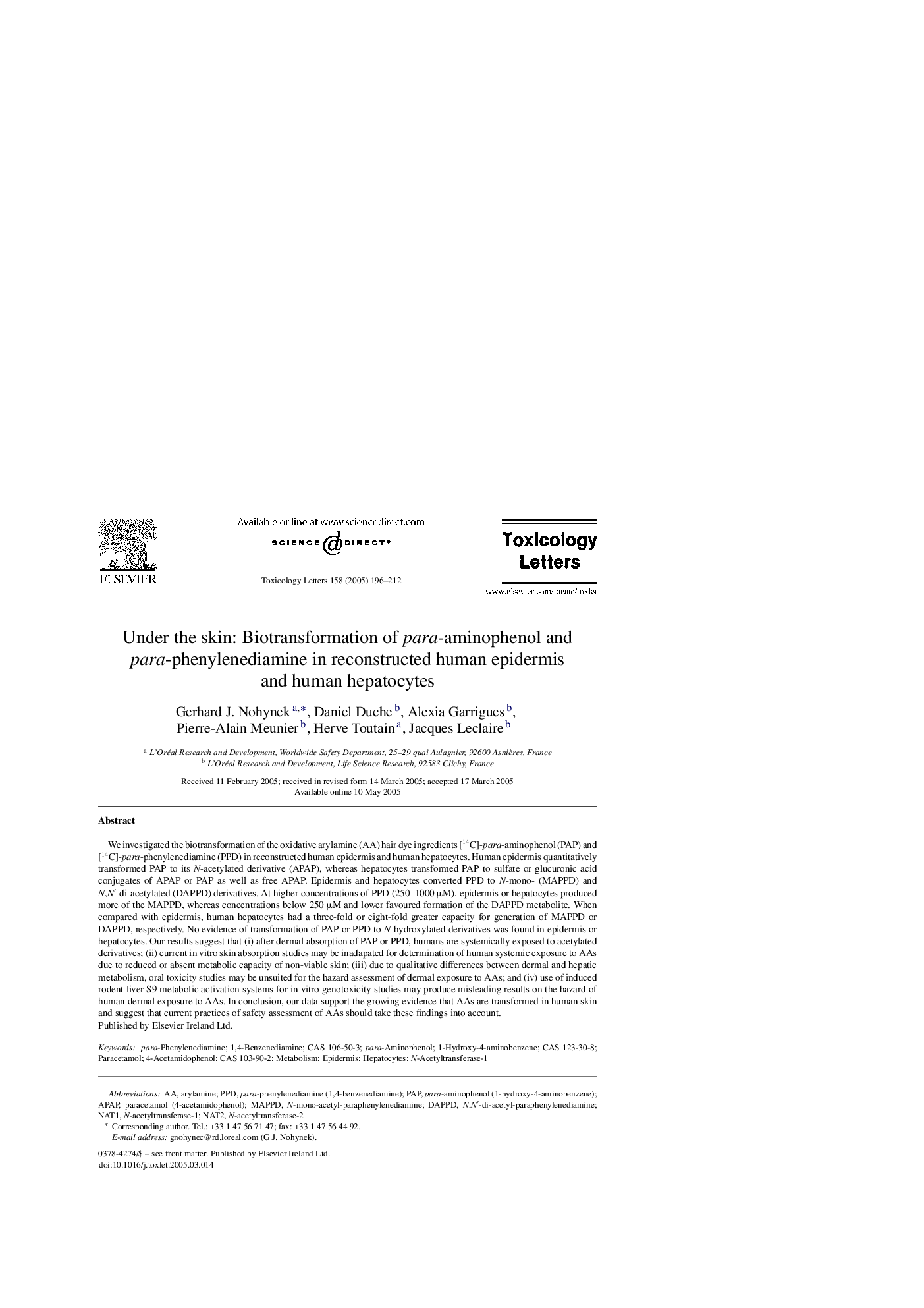| کد مقاله | کد نشریه | سال انتشار | مقاله انگلیسی | نسخه تمام متن |
|---|---|---|---|---|
| 9037069 | 1133398 | 2005 | 17 صفحه PDF | دانلود رایگان |
عنوان انگلیسی مقاله ISI
Under the skin: Biotransformation of para-aminophenol and para-phenylenediamine in reconstructed human epidermis and human hepatocytes
دانلود مقاله + سفارش ترجمه
دانلود مقاله ISI انگلیسی
رایگان برای ایرانیان
کلمات کلیدی
موضوعات مرتبط
علوم زیستی و بیوفناوری
علوم محیط زیست
بهداشت، سم شناسی و جهش زایی
پیش نمایش صفحه اول مقاله

چکیده انگلیسی
We investigated the biotransformation of the oxidative arylamine (AA) hair dye ingredients [14C]-para-aminophenol (PAP) and [14C]-para-phenylenediamine (PPD) in reconstructed human epidermis and human hepatocytes. Human epidermis quantitatively transformed PAP to its N-acetylated derivative (APAP), whereas hepatocytes transformed PAP to sulfate or glucuronic acid conjugates of APAP or PAP as well as free APAP. Epidermis and hepatocytes converted PPD to N-mono- (MAPPD) and N,Nâ²-di-acetylated (DAPPD) derivatives. At higher concentrations of PPD (250-1000 μM), epidermis or hepatocytes produced more of the MAPPD, whereas concentrations below 250 μM and lower favoured formation of the DAPPD metabolite. When compared with epidermis, human hepatocytes had a three-fold or eight-fold greater capacity for generation of MAPPD or DAPPD, respectively. No evidence of transformation of PAP or PPD to N-hydroxylated derivatives was found in epidermis or hepatocytes. Our results suggest that (i) after dermal absorption of PAP or PPD, humans are systemically exposed to acetylated derivatives; (ii) current in vitro skin absorption studies may be inadapated for determination of human systemic exposure to AAs due to reduced or absent metabolic capacity of non-viable skin; (iii) due to qualitative differences between dermal and hepatic metabolism, oral toxicity studies may be unsuited for the hazard assessment of dermal exposure to AAs; and (iv) use of induced rodent liver S9 metabolic activation systems for in vitro genotoxicity studies may produce misleading results on the hazard of human dermal exposure to AAs. In conclusion, our data support the growing evidence that AAs are transformed in human skin and suggest that current practices of safety assessment of AAs should take these findings into account.
ناشر
Database: Elsevier - ScienceDirect (ساینس دایرکت)
Journal: Toxicology Letters - Volume 158, Issue 3, 15 September 2005, Pages 196-212
Journal: Toxicology Letters - Volume 158, Issue 3, 15 September 2005, Pages 196-212
نویسندگان
Gerhard J. Nohynek, Daniel Duche, Alexia Garrigues, Pierre-Alain Meunier, Herve Toutain, Jacques Leclaire,